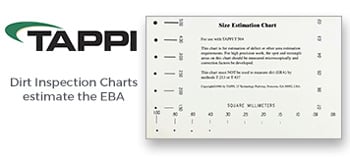Mapping the Morphology of Market Pulps - Worldwide, 2006 Papermaker’s Conference

There are over 100 individual pulps available as market pulps throughout the world. To help us understand and communicate, we use broad market pulp categories that are typically defined by a geographical region, level of bleaching, wood type, and pulping process. Northern bleached softwood kraft (NBSK) and southern bleached hardwood kraft (SBHK) are examples. While these commodity pulp categories are useful, they are not quantitative and sufficiently discriminating to provide more than broad indicators of pulp characteristics. To get more quantitative information we do beater curves and make automated fiber morphology measurements. Now we have a large set of numbers that don’t lend themselves to ready analysis. How can we clearly understand what’s available in the marketplace? What type of paper structure will a given pulp produce? Which pulp is going to most efficiently produce the desired performance?
This presentation will show an approach to mapping the fiber morphology of a representative sample of the market pulps available throughout the world. Morphology parameters that determine pulp efficiency and paper structure will be presented in a way that makes the relative performance characteristics of each of these pulps clear. The major role that fiber morphology plays will be illustrated by developing its connection to beater curve results and the broad pulp category performance characteristics we commonly see.





